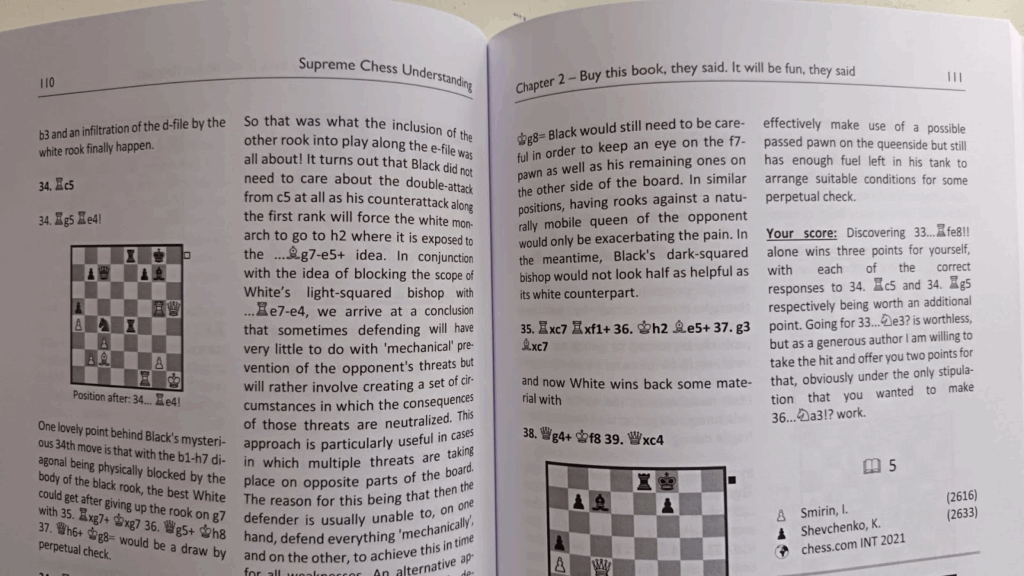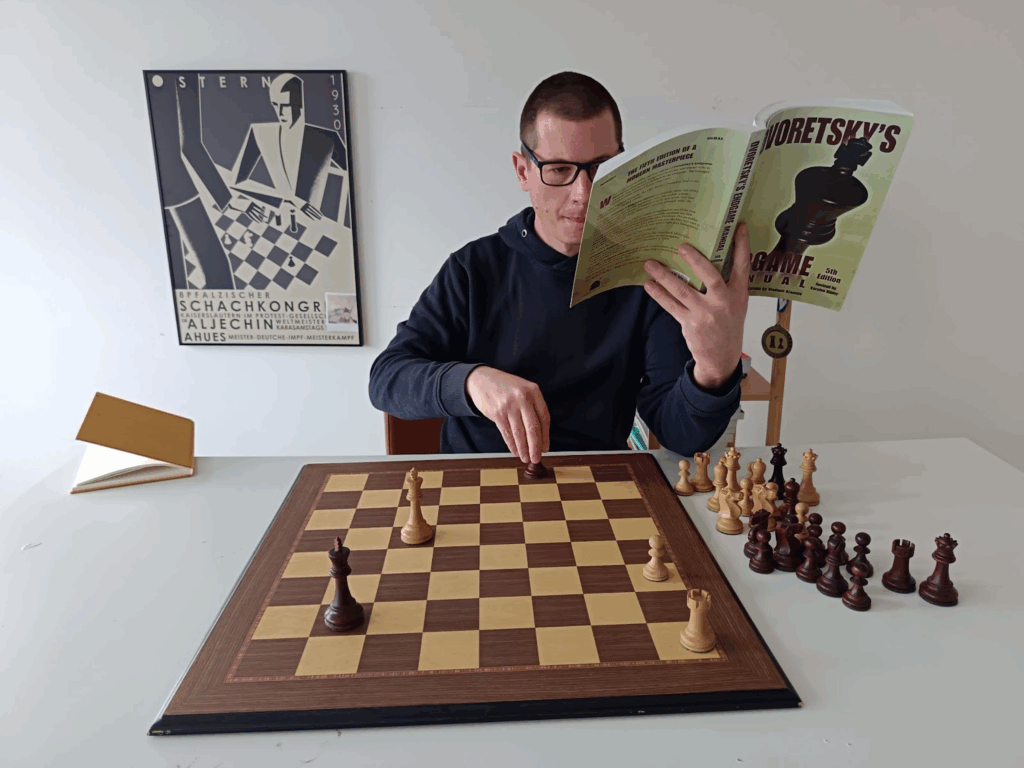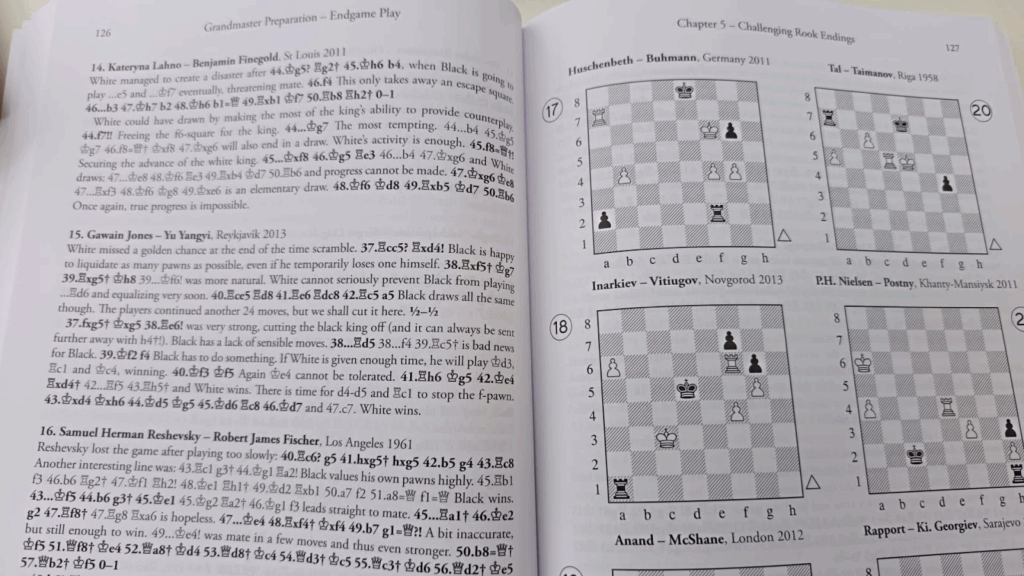Introduction
Try to get as much out of them by solving every position over a real board, set up every position, take notes and write down your analysis for each problem you solve. I’m rated to just above 2000 FIDE and you could argue that I’m underrated for the books on this list. My completion rate for some of them definitely supports that claim. Recognizing your opponents resources was by far the most difficult of the seven books for me personally. I remember solving it with my coach who is 2300 FIDE, and we were both struggling to solve the majority of the positions. I wish you luck with these books. I hope they help you reach your chess goals and titles.
1. Mark Dvoretsky: Recognizing Your Opponent’s Resources
Recognizing Your Opponent’s Resources may be the only book in existence that teaches you how to navigate positions in a smart way, having what your opponent wants to do in mind without it impeding your ability to also think and play actively and not to defend unnecessarily. I’m gonna be honest and say that I started this book several times and only managed to go through all the exercises on my fourth attempt.

They are very advanced for my level. I think this is a rare case of a book written for masters. That being said, I think solving all the problems, albeit with a low completion rate, has helped my play immensely. Making a mistake and then having Dvoretsky explain how I should have approached the position correctly may be more useful than correctly solving the problem in the first place. I’m gonna be honest and say that I started this book several times and only managed to go through all the exercises on my fourth attempt. They are very advanced for my level. I think this is a rare case of a book written for masters. That being said, I think solving all the problems, albeit with a low completion rate, has helped my play immensely.
Read Recognizing Your Opponent’s Resources
2. Jacob Aagaard: GM Preparation: Strategic Play

Strategic Play is Jacob Aagaard’s manual of how to solve complex positions. In the introduction, Jacob introduces us to four types of decisions; automatic decisions, simple decisions, and finally, complex decisions – the hardest positions of all. They require intuition, calculation, planning, and an understanding of general strategic and positional concepts. Strategic Play focuses on making complex decisions. It is divided into five chapters; Squares, Pieces, Prophylaxis, Dynamics and Fighting the tide. Each chapter is accompanied by very difficult problems. In a way, Strategic play combines Calculation and Positional play into one book.
Read GM Preparation: Strategic Play
3. Wojciech Moranda: Supreme Chess Understanding

Supreme Chess Understanding explains the difference between static and dynamic advantages, highlighting the importance of being able to do so while playing, and how knowing where your advantage (or disadvantage) lies enables you to evaluate, plan, and play precisely, according to what the position requires. Moranda goes over each problem in great depth, ensuring proper understanding of all the features of the position one had to appreciate in order to solve it. For everyone who’s already covered the basics of calculation, strategy, and positional play, this book will be a great tool for improving understanding of different types of complex positions.
Read Supreme Chess Understanding
4. Mark Dvoretsky: Dvoretsky’s Endgame Manual

Probably known as the most difficult chess book ever written, Dvoretsky’s Endgame Manual is a must-read for any improving player. Let me rephrase that. Not a must-read, a must-use book. It is a resource that covers most of what you have to know about technical endgames and almost every tricky endgame position one might encounter in practical play in a notoriously hard-to-understand way. At first glance, it seems as if the book was intended for players 2300 and above, but anyone can and should be using it. In itself it is enough to teach you almost everything. And it’s packed with practical exercises that will make you transform theoretical knowledge into a skill you can use over the board. The Manual also comes in a fast track edition, shorter, and slightly easier to follow for beginners.
Torture yourself with Dvoretsky’s Endgame Manual
5. Jacob Aagaard: GM Preparation: Endgame Play

Endgame Play is for players who have more than covered the basics of both theoretical and complex endgames, and are looking for a tool that will make them sharper, more aware, and better at calculating in endgames. It’s the only book, as far as I know, devoted to calculation in the endgame on such a high level. If you are very ambitious and slightly masochistic, and you have covered the basics of endgame theory and strategy, I would urge you to go through Endgame Play. It’s going to be extremely hard and very rewarding.
Read GM Preparation: Endgame Play
6. Andrei Volokitin, Vladimir Grabinsky: Perfect Your Chess
If I had to choose one puzzle book from the list I’d recommend to every chess player, regardless of strength, it would be Perfect Your Chess. The concept is new, refreshing compared to almost every other chess book, and incredibly useful.

The book is divided into three sections, each different in nature. The first section is very similar to actual play, as you’re just given a position and asked to make a move. The second section requires you to find a winning move, making it, in my opinion, way less challenging than the first, as you know what to look for. But the third section is pure brilliancy. Solving it is like having a 100-hour lesson with a GM coach. You are given 98 positions with 98 specific questions you must answer. That method of teaching is what makes chess lessons useful. Having the same resources in a book is wonderful. I wish someone would write a dozen more books like this one.

7. David Navara: Lessons on Uncompromising Play
Lessons on Uncompromising Play is a book meant for strong players who are willing to do hard work to progress further. It’s not a book on tactics, strategy, or the endgame, it’s a book on how to play good, uncompromising chess and how to win games. It addresses the key questions of chess: how to win, how to seize the initiative, how to convert when you’re better, how to defend when worse, how to attack, how to handle dynamics, and how to win on demand or in equal positions. It may be the only book I’ve come across which I suspect may be extremely useful for people above 2500 FIDE. And yet, I was able to understand it perfectly, and had no trouble following Navara’s reasoning.

If you are an advanced player, and you want to go beyond simple concepts when it comes to dynamic play, read Lessons on Uncompromising Play. It’s a remarkably useful and unique book written by a unique guy.



